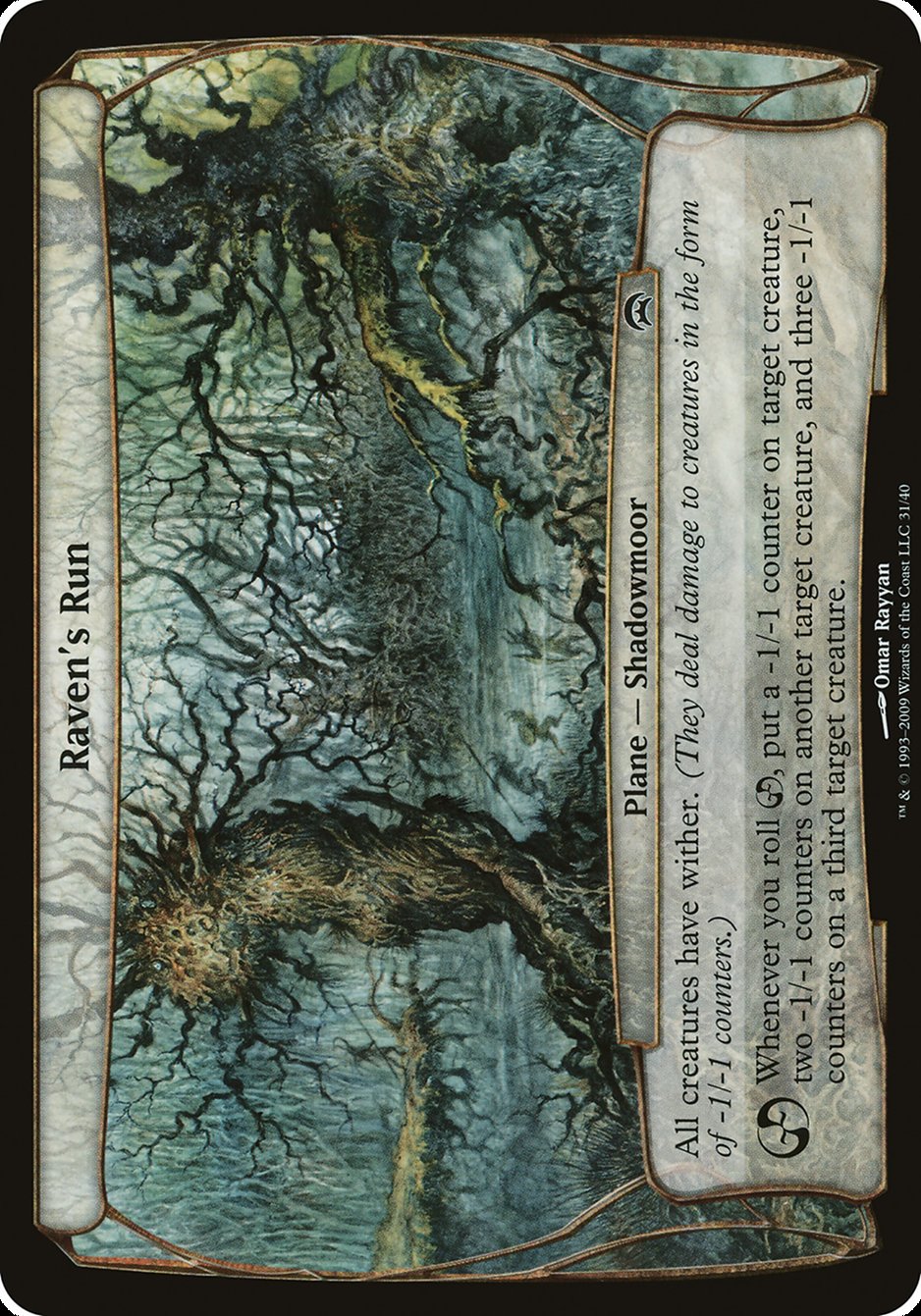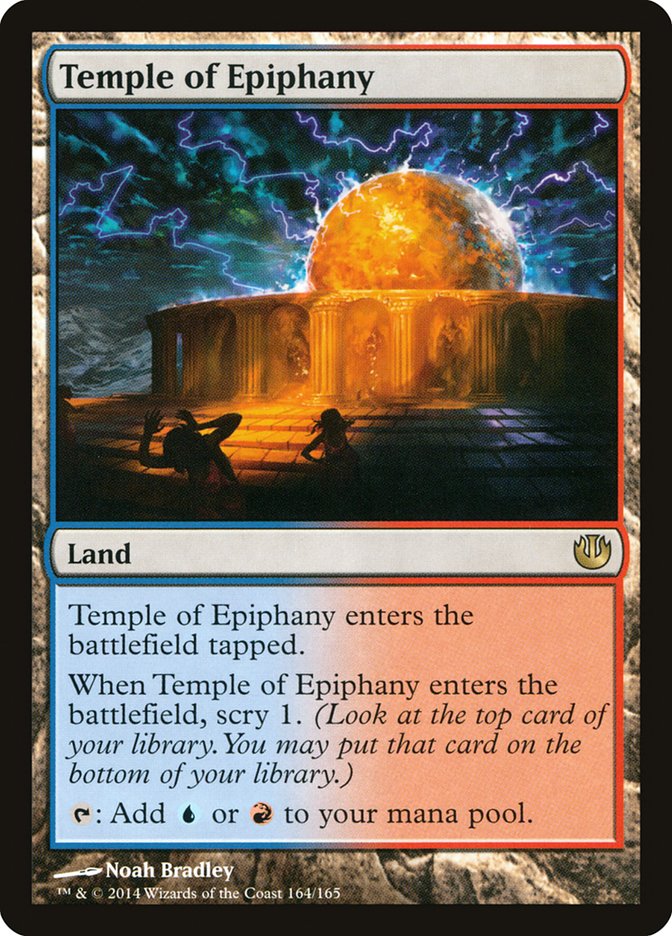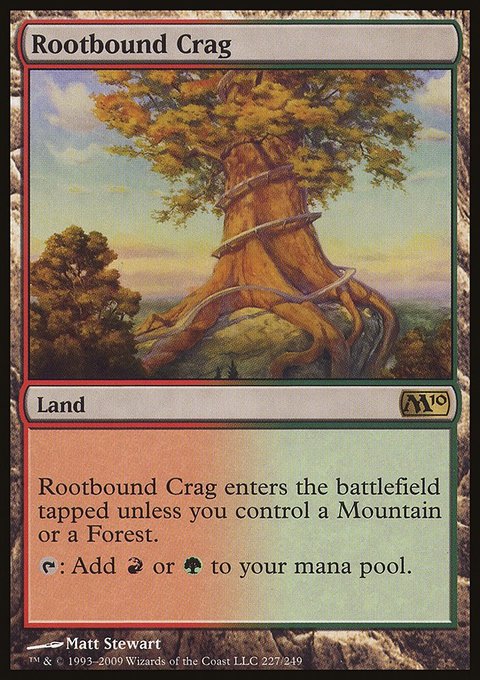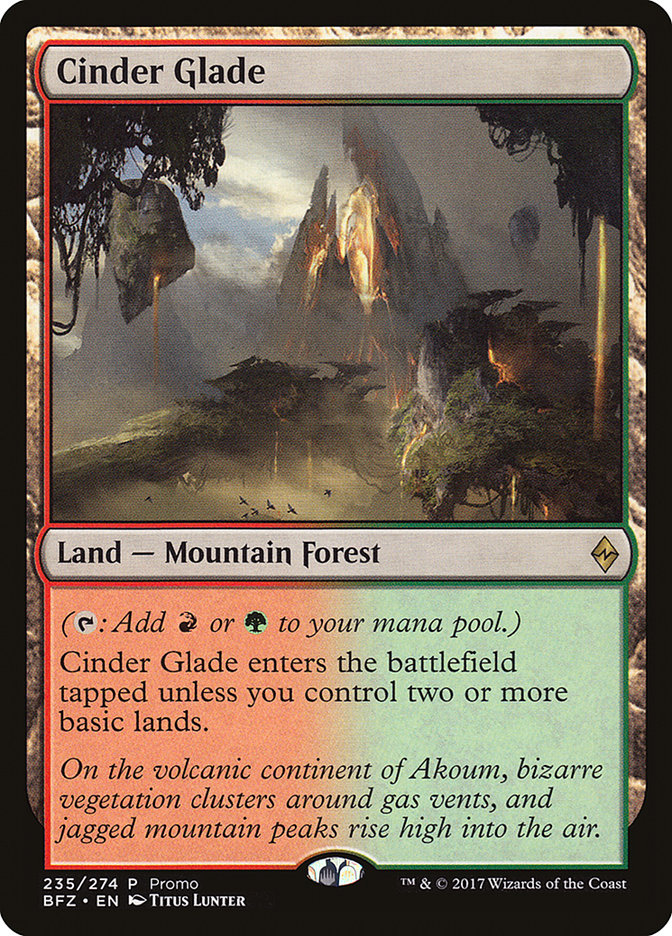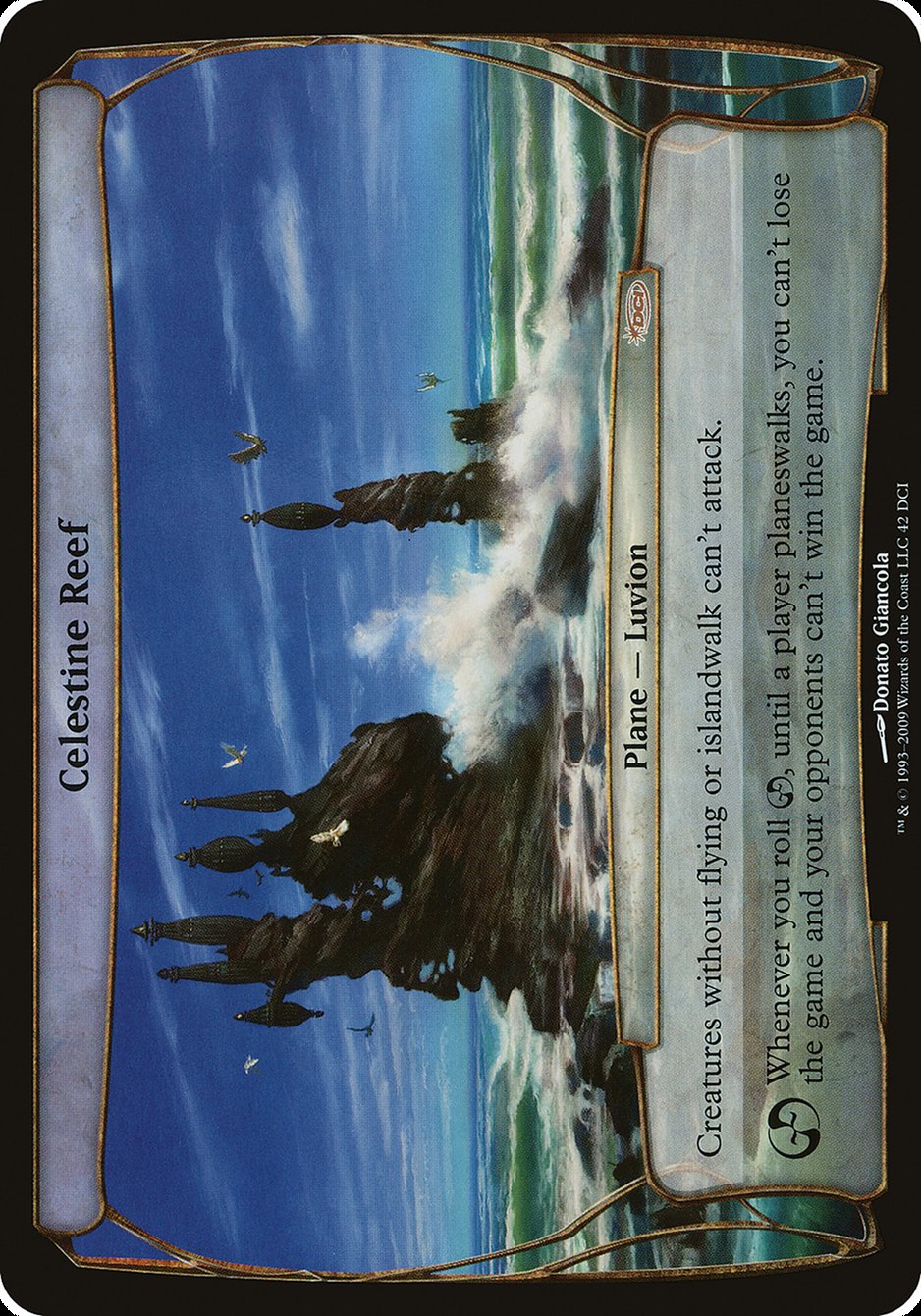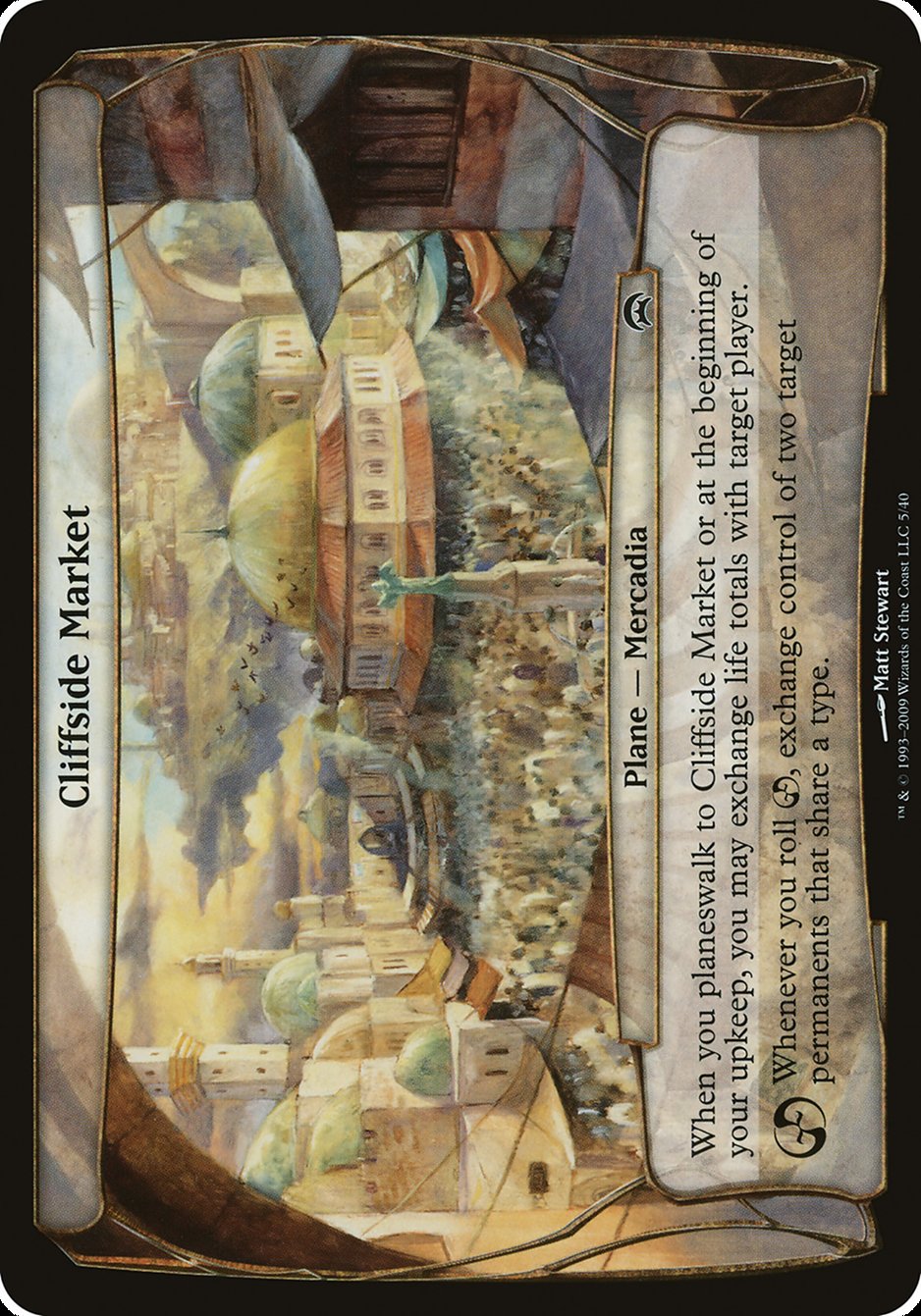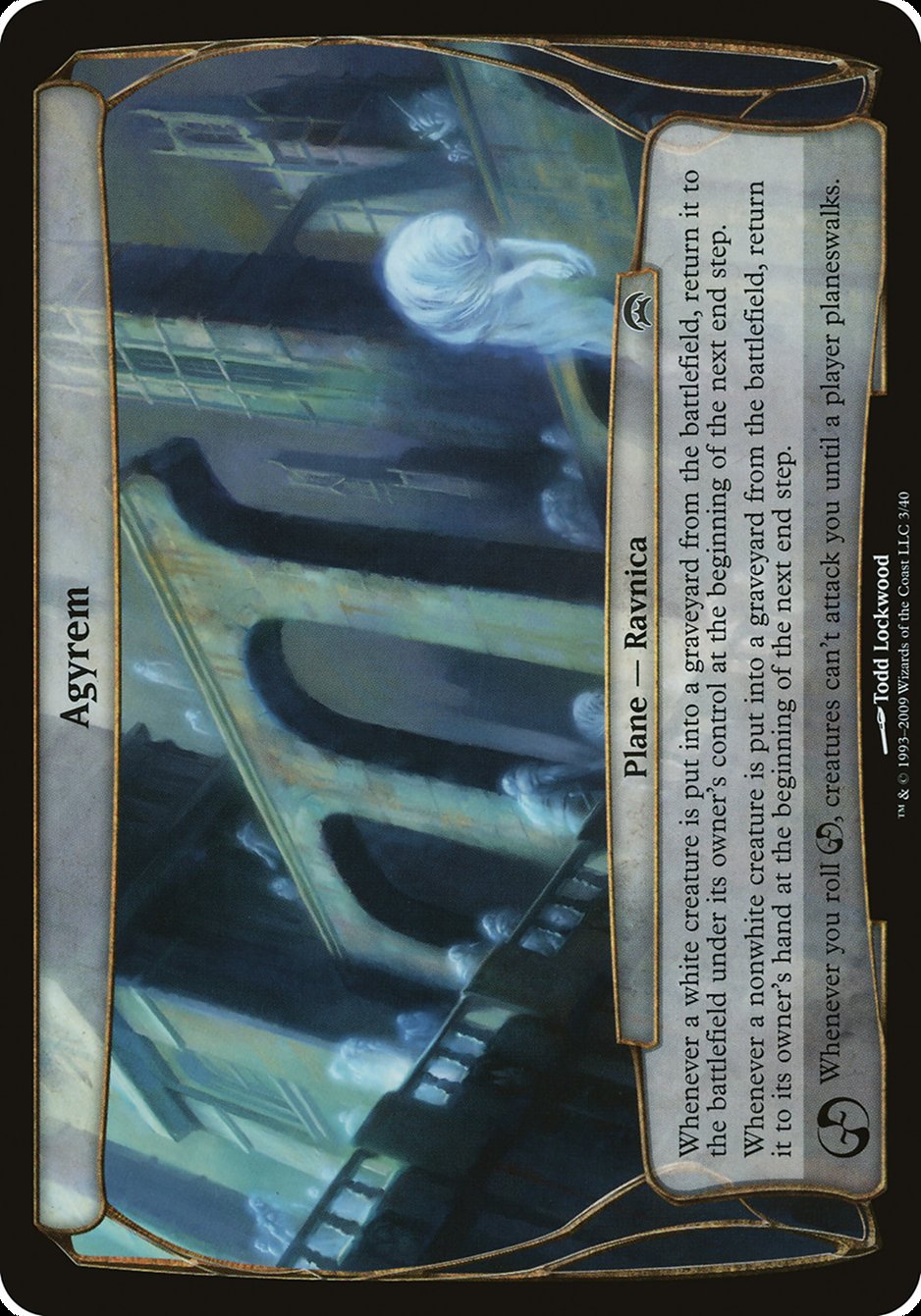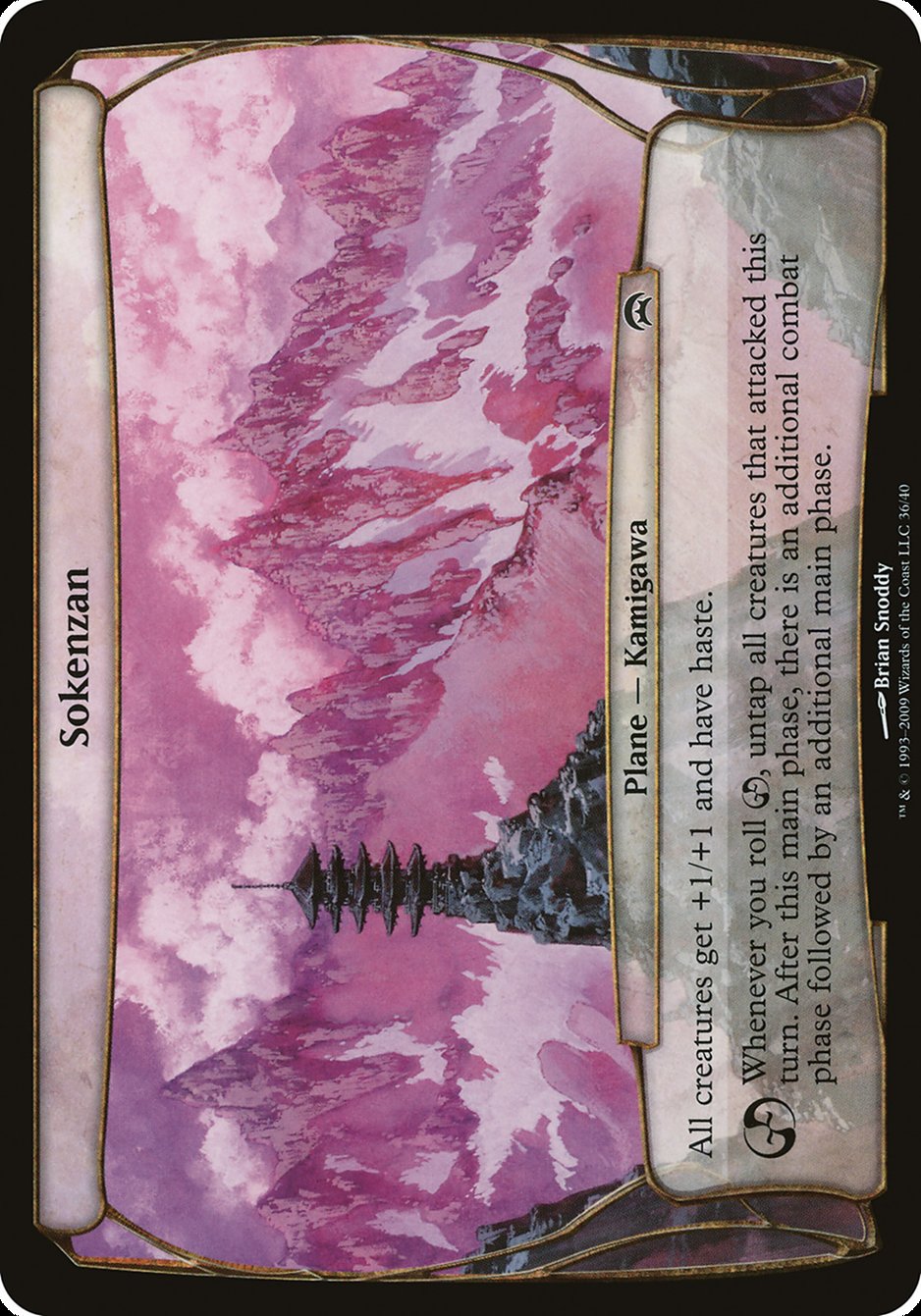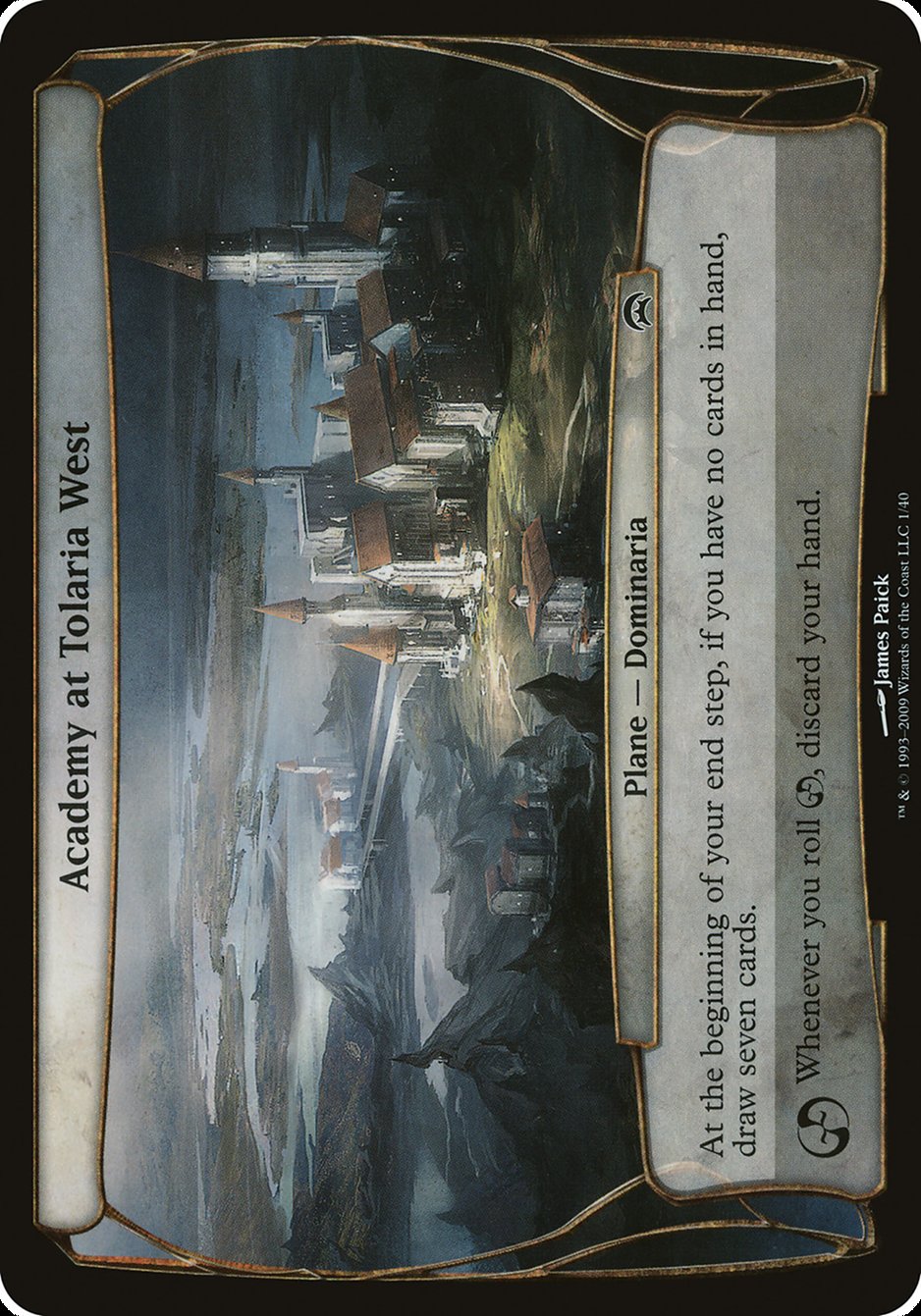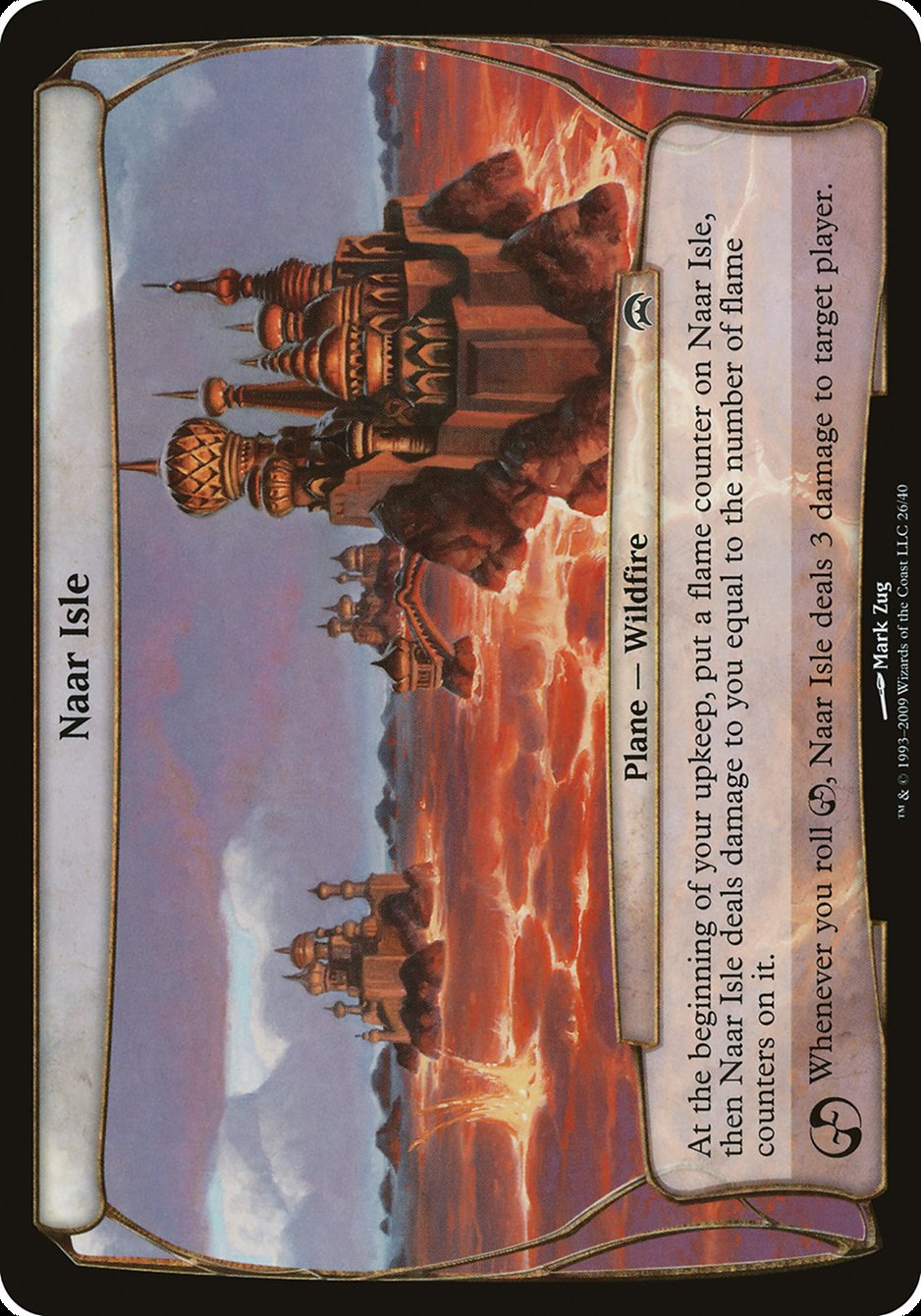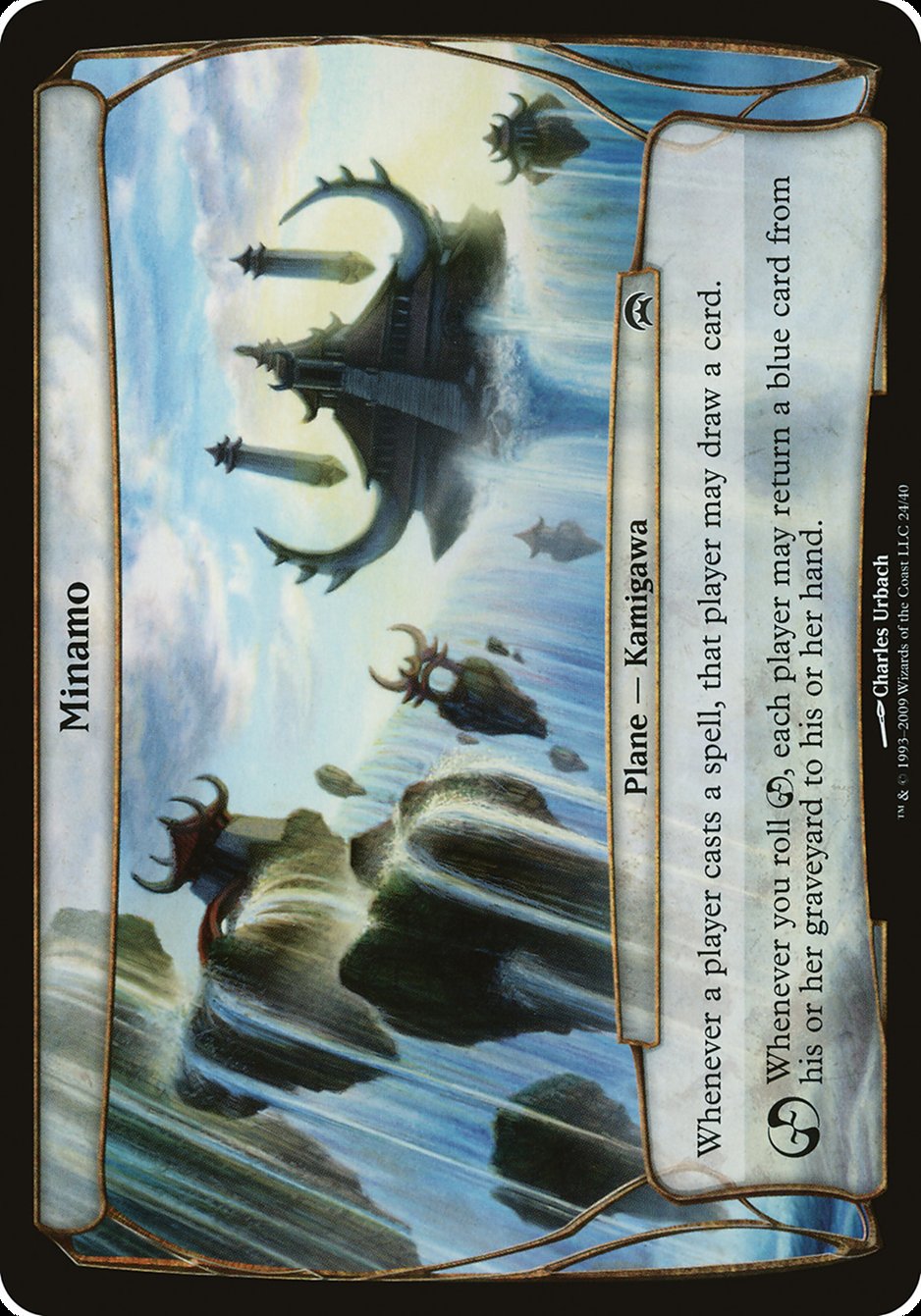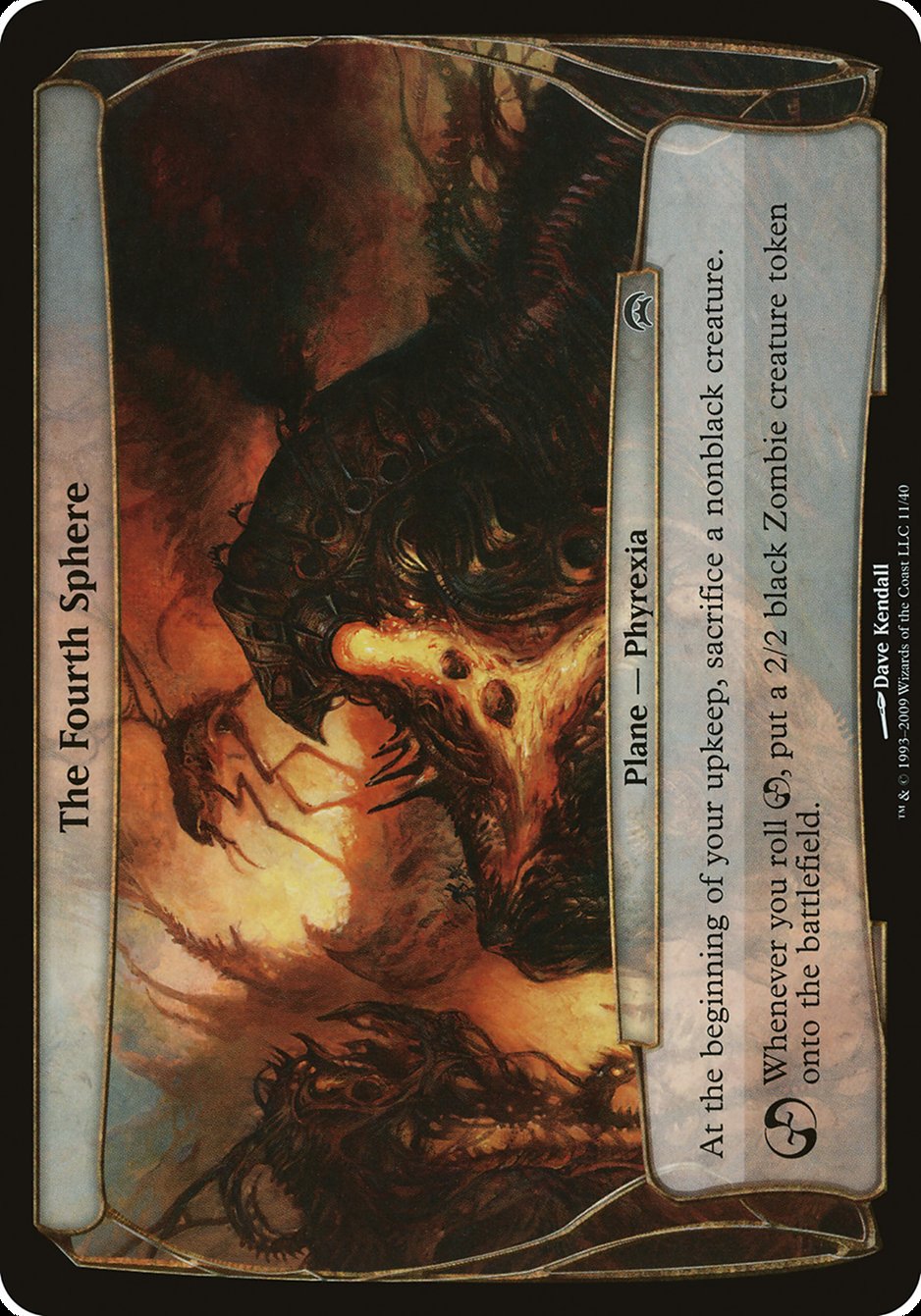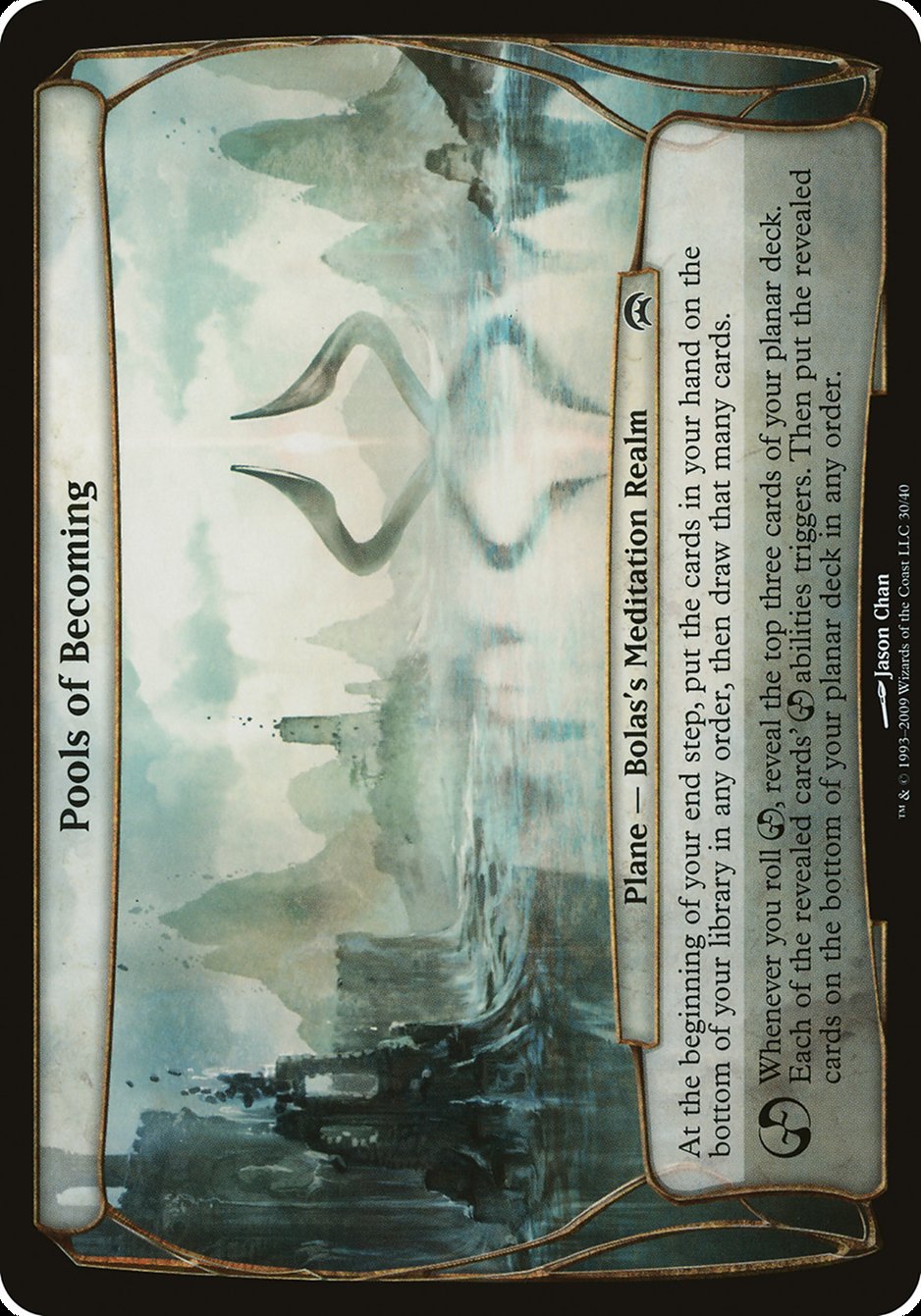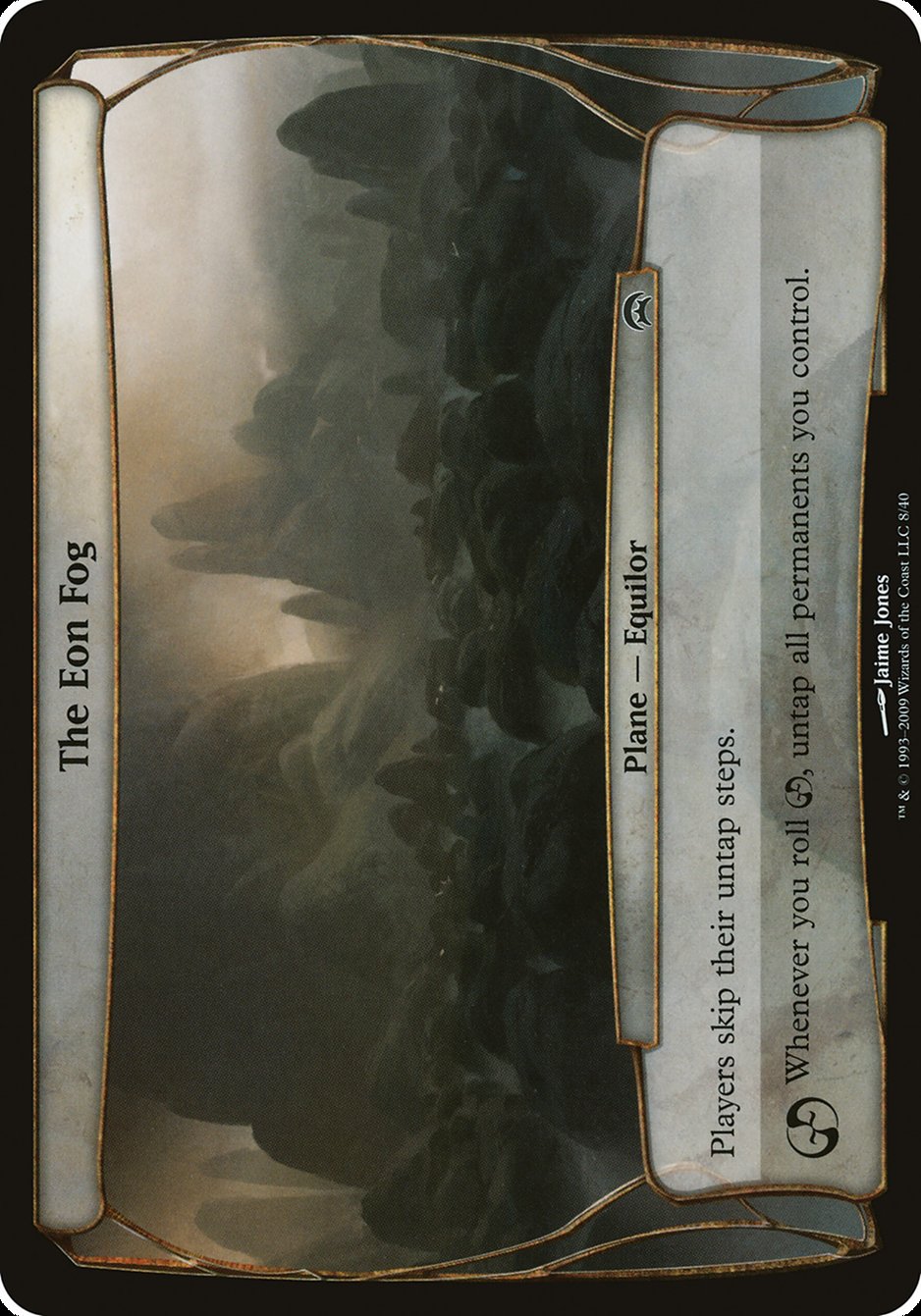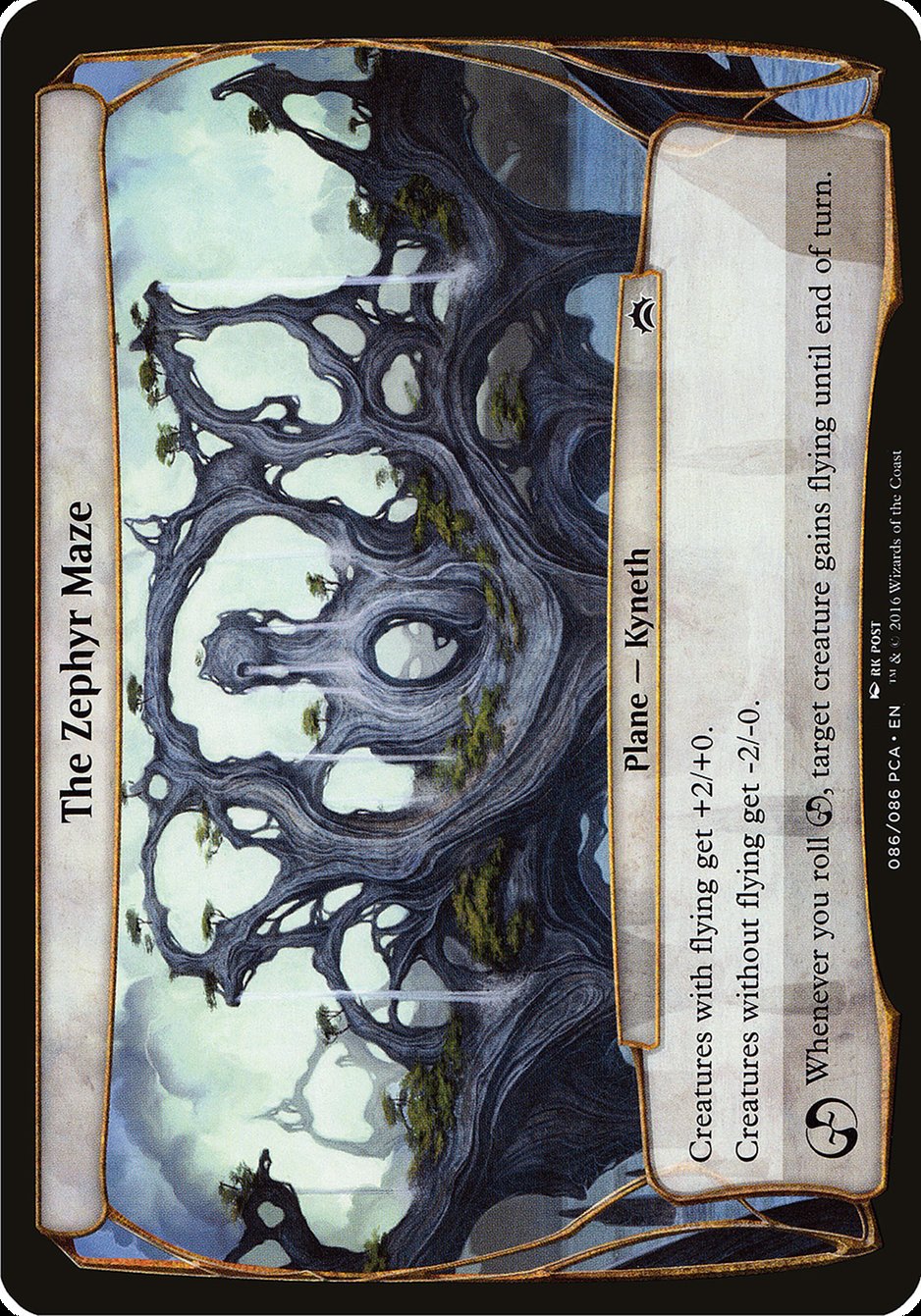Raven's Run MTG Card
| Card sets | Released in 2 setsSee all |
| Rarity | Common |
| Type | Plane — Shadowmoor |
Text of card
All creatures have wither. (They deal damage to creatures in the form of -1/-1 counters.) Whenever you roll chaos, put a -1/-1 counter on target creature, two -1/-1 counters on another target creature, and three -1/-1 counters on a third target creature.
Cards like Raven's Run
Raven’s Run promises to be a dynamic presence in decks where land strategy is key. Like other dual lands in MTG, Raven’s Run enters the battlefield tapped but offers a tactical advantage by providing two types of mana. It joins an esteemed lineup of lands like Temple of Epiphany which also enters tapped, offers scry 1 to filter draws, but doesn’t have the creature enhancing ability that Raven’s Run possesses.
Comparing it with other cards in its category, Rootbound Crag is a contender with no entry tapped drawbacks if you control a Mountain or Forest, thus offering immediate versatility. Another similar card is Cinder Glade, benefiting both from the basic land types Mountain and Forest, and the ability to come into play untapped if you control two or more basic lands. However, neither grants the power and toughness increase for Elementals that is unique to Raven’s Run.
Ultimately, Raven’s Run could be viewed as an underdog with its distinctive ability to bolster the strength of Elemental creatures, potentially turning the tides of the game while providing essential mana in a pinch.
Cards similar to Raven's Run by color, type and mana cost
Card Pros
Card Advantage: Raven’s Run is an excellent tool for edging ahead in card economy. It allows for strategic drawing that can significantly bolster your hand, keeping your options versatile and threatening to opponents.
Resource Acceleration: This card efficiently boosts your resource pool. With the capacity to add extra mana, it propels you ahead, enabling bigger plays and reinforcing your board presence much quicker than your adversary.
Instant Speed: The versatility of an instant speed spell cannot be overstated. Raven’s Run disrupts the flow of the game at critical moments, potentially saving you from dire situations or maximizing the impact of your strategy at the end of an opponent’s turn.
Card Cons
Discard Requirement: Raven’s Run necessitates discarding a card upon activation. This could deplete your hand at critical moments, leaving you without enough options for strategic plays later in the game.
Specific Mana Cost: Raven’s Run demands a precise combination of mana types to be cast. This requirement can be restrictive, making it less versatile and harder to fit into multi-colored or colorless decks that may not produce the needed mana as consistently.
Comparatively High Mana Cost: The cost to play Raven’s Run is not considered low. When you compare it to other cards with similar or more impactful effects, it’s evident that it may not always be the most economical choice in terms of mana efficiency. This can slow down your game and reduce the speed of your deck’s performance overall.
Reasons to Include Raven’s Run in Your Collection
Versatility: Raven’s Run is a highly adaptable card that fits seamlessly into a variety of decks. It’s particularly potent in formats where land utility plays a critical role in strategy formulation, allowing for diverse and flexible gameplay.
Combo Potential: With its ability to interact with graveyard mechanics, Raven’s Run serves as a key component in decks that capitalize on card recursion or graveyard synergies. This opens up avenues for powerful combinations that can change the course of the game.
Meta-Relevance: For players engaged in competitive play, staying attuned to the prevailing meta is crucial. Raven’s Run’s attributes address the needs of several prominent strategies, making it a relevant and timely addition as the landscape of MTG continues to evolve.
How to Beat
Raven’s Run presents a unique challenge on the battlefield in MTG. This potent card requires a strategic approach to overcome its abilities. A key tactic is to address the mana generation capability that Raven’s Run offers to the opposing player. Focusing on land destruction or control effects can prevent them from gaining the advantage that the additional mana provides. Moreover, utilizing cards with land bounce abilities can temporarily set back your opponent’s mana curve, giving you an edge. It’s crucial to have countermeasures ready to deal with the creatures or spells that Raven’s Run may help your opponent bring into play. Therefore, playing cards that can invalidate or neutralize spells and abilities can prove to be effective in suppressing the power boost that Raven’s Run could provide. Additionally, having removal spells on hand to deal with problematic permanents swiftly is advisable. As with all challenges in MTG, flexibility and adaptation to the evolving game state will be your greatest allies when facing a card like Raven’s Run.
Where to buy
If you're looking to purchase Raven's Run MTG card by a specific set like Planechase Planes and Planechase Anthology Planes, there are several reliable options to consider. One of the primary sources is your local game store, where you can often find booster packs, individual cards, and preconstructed decks from current and some past sets. They often offer the added benefit of a community where you can trade with other players.
For a broader inventory, particularly of older sets, online marketplaces like TCGPlayer, Card Kingdom and Card Market offer extensive selections and allow you to search for cards from specific sets. Larger e-commerce platforms like eBay and Amazon also have listings from various sellers, which can be a good place to look for sealed product and rare finds.
Additionally, Magic’s official site often has a store locator and retailer lists for finding Wizards of the Coast licensed products. Remember to check for authenticity and the condition of the cards when purchasing, especially from individual sellers on larger marketplaces.
Below is a list of some store websites where you can buy the Raven's Run and other MTG cards:
 BUY NOW
BUY NOW BurnMana is an official partner of TCGPlayer
- eBay
- Card Kingdom
- Card Market
- Star City Games
- CoolStuffInc
- MTG Mint Card
- Hareruya
- Troll and Toad
- ABU Games
- Card Hoarder Magic Online
- MTGO Traders Magic Online
See MTG Products
Printings
The Raven's Run Magic the Gathering card was released in 2 different sets between 2009-09-04 and 2018-12-25. Illustrated by Omar Rayyan.
| # | Released | Name | Code | Symbol | Number | Frame | Layout | Border | Artist |
|---|---|---|---|---|---|---|---|---|---|
| 1 | 2009-09-04 | Planechase Planes | OHOP | 31 | 2003 | Planar | Black | Omar Rayyan | |
| 2 | 2018-12-25 | Planechase Anthology Planes | OPCA | 66 | 2015 | Planar | Black | Omar Rayyan |
Rules and information
The reference guide for Magic: The Gathering Raven's Run card rulings provides official rulings, any errata issued, as well as a record of all the functional modifications that have occurred.
| Date | Text |
|---|---|
| 2009-10-01 | A face-up plane card that’s turned face down becomes a new object with no relation to its previous existence. In particular, it loses all counters it may have had. |
| 2009-10-01 | A plane card is treated as if its text box included “When you roll {PW}, put this card on the bottom of its owner’s planar deck face down, then move the top card of your planar deck off that planar deck and turn it face up.” This is called the “planeswalking ability.” |
| 2009-10-01 | Damage from creatures with wither affects players and planeswalkers normally. |
| 2009-10-01 | If an ability of a plane refers to “you,” it’s referring to whoever the plane’s controller is at the time, not to the player that started the game with that plane card in their deck. Many abilities of plane cards affect all players, while many others affect only the planar controller, so read each ability carefully. |
| 2009-10-01 | If the source of the damage is still on the battlefield at the time that damage is dealt, its characteristics are checked to see if it has wither. If the source has left the battlefield by then, its last existence on the battlefield is checked to see if it had wither. |
| 2009-10-01 | Multiple instances of wither are redundant. |
| 2009-10-01 | Since damage from a creature with wither is real damage, it follows all the other rules for damage. It can be prevented or redirected. When it’s dealt, it will cause “Whenever -his creature] deals damage” and “Whenever -his creature] is dealt damage” abilities to trigger. |
| 2009-10-01 | The -1/-1 counters that result from wither remain on the damaged creature indefinitely. They won’t be removed if the creature regenerates or the turn ends. |
| 2009-10-01 | The controller of a face-up plane card is the player designated as the “planar controller.” Normally, the planar controller is whoever the active player is. However, if the current planar controller would leave the game, instead the next player in turn order that wouldn’t leave the game becomes the planar controller, then the old planar controller leaves the game. The new planar controller retains that designation until they leave the game or a different player becomes the active player, whichever comes first. |
| 2009-10-01 | Wither applies to any damage, not just combat damage. |
| 2009-10-01 | You must target three different creatures when the chaos ability triggers, even if that means you have to target creatures you control. If you can’t target three creatures (because there are just two creatures on the battlefield, perhaps), the ability is removed from the stack and does nothing. |
